World benchmark in Smart Grids
Smart grids, a technological leap for a decarbonised world
Decarbonising the economy and digital innovation entails building innovative distribution grids to cope with new models of electricity consumption. The bi-directionality, flexibility, digitalisation and automation of smart grids make a new interconnected map possible that responds to the needs of energy users and producers. Smart grids also ensure the incorporation of more renewables and are positioned as a vital cornerstone of the energy transition.
Therefore, in our new Strategic Plan, investments in this area will allow us to reach a regulated asset base of 56 billion euros in 2025, which represents a growth of 44% compared to the €39.2 billion invested for the first quarter of 2023. In this way, the grids will guarantee the integration of new renewable capacity and enable the implementation of new solutions and distributed services.
Moving towards the smart grid of the 21st century
-
Global Smart Grids Innovation Hub King Felipe VI visits the Iberdrola technology centre in Bilbao that will define the electricity grids of the future.
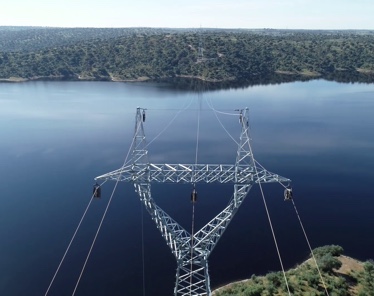
-
Network investment plan in the UK Iberdrola reaffirms its investment of more than £3 billion in UK networks following new regulatory framework
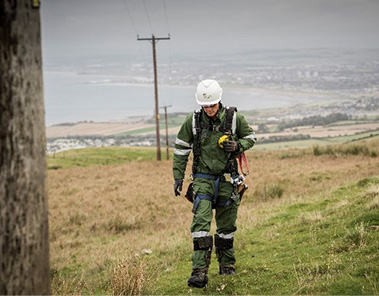
-
Iberdrola and Arbórea present the robot Antecursor I It is an inspection system that improves efficiency with predictive maintenance of electrical infrastructures
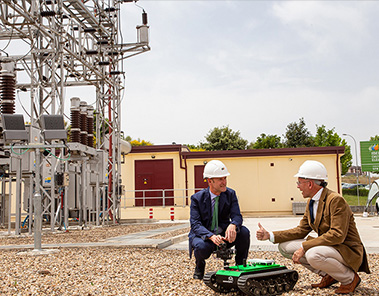
-
Smart meters and the digitalisation of the grid They provide detailed consumption information, helping consumers to reduce their electricity bills, and increase knowledge about the electricity grid.
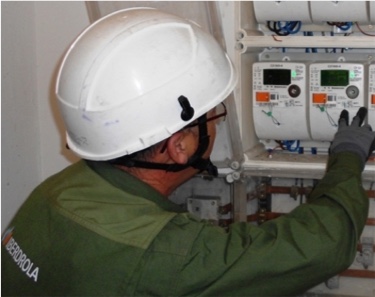
-
DSO, smarter grid management Implementing the DSO model will maximise the integration of renewable energies and accelerate the decarbonisation of the economy.
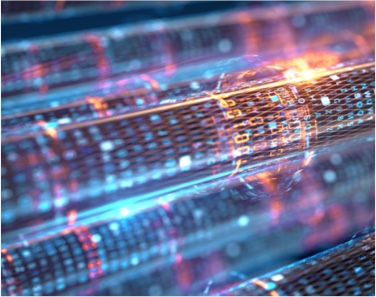
-
'Edge computing' in the electricity grid We drove the development of a new digital platform for transformer centres.
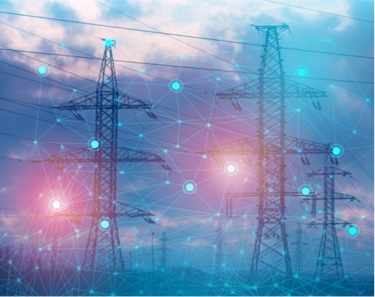
What are smart grids?
Smart grids are electricity networks that can intelligently and dynamically integrate the actions of all the users connected to them — those which generate energy, those which consume energy or those which do both — in order to supply electricity efficiently, sustainably, economically and safely.
Smart grids incorporate digital technology into their traditional design to facilitate the two-way exchange of energy and information. They do so thanks to the internet, information and communication technologies, control systems and state-of-the-art IT and home automation applications.
A smart grid is, thus, able to respond to the electricity demand needs of citizens and to any potential incidents that occur. Smart grids are capable of integrating renewable installations of various sizes and, thanks to their bi-directional nature, the user can be both consumer and producer: they can produce energy and sell it to industrial or commercial users.
How do smart grids work?
The operation of a smart grid is more complex than that of a traditional grid, as it employs remote management by incorporating automated information and control systems that respond to fluctuations in energy production and demand. This provides information on energy consumption at all times and makes for a more responsible use of the entire cycle, as well as providing knowledge regarding the status of each node, segment and element and it also increases the efficiency and operational effectiveness of the lines. That is, smart grids encompass the entire technological infrastructure that will be needed, from energy generation, transmission and distribution, to electricity storage and the consumption of the energy generated.
How do smart grids work?
The operation of a smart grid is more complex than that of a traditional grid, as it employs remote management by incorporating automated information and control systems that respond to fluctuations in energy production and demand. This provides information on energy consumption at all times and makes for a more responsible use of the entire cycle, as well as providing knowledge regarding the status of each node, segment and element and it also increases the efficiency and operational effectiveness of the lines. That is, smart grids encompass the entire technological infrastructure that will be needed, from energy generation, transmission and distribution, to electricity storage and the consumption of the energy generated.
Tasks and challenges for smart grids

The new energy model requires tackling numerous tasks
-

-
 Electrify other uses, such as heating and transport, the latter accounting for more than 25 % of CO2 emissions into the atmosphere.
Electrify other uses, such as heating and transport, the latter accounting for more than 25 % of CO2 emissions into the atmosphere. -
 Respond to the demands of a more connected consume who, empowered by technology, wants to make decisions that allow them to optimise and/or adapt their consumption to their lifestyle and have the possibility of producing the energy they consume at home, through formulas such as self-consumption.
Respond to the demands of a more connected consume who, empowered by technology, wants to make decisions that allow them to optimise and/or adapt their consumption to their lifestyle and have the possibility of producing the energy they consume at home, through formulas such as self-consumption.
What data can we gain from smart grids?
Thanks to a smart grid, we can identify the geographical areas where the most energy is consumed and those where the most faults occur.In addition, we will learn which equipment has the most faults and we will recognise different types of incident within the electricity network. Fraud can also be detected. For better energy efficiency, smart grids offer energy demand and generation forecasts and, thanks to their wave quality, the quality of supply is improved. They also allow us to understand the maintenance requirements of the networked assets.

Iberdrola, a world leader in smart grids
The Iberdrola group considers grids to be a key factor both for the electrification of the economy and for the revitalisation of the territories in which the company operates. Which is why it considers regulated assets, together with renewable energies, to be key factors in its strategy.
85% of organic investments in this area are practically assured, as they are made in projects with prices already closed or with advanced negotiations and known conditions. Around 20% of investments in transmission projects will go to the United Kingdom, the United States and Brazil. These investments will enable us to reach a regulated asset base of EUR 56 billion in 2025, which represents a 44% growth compared to the estimated EUR 39.2 billion in 2022.
The company operates one of the world's largest distribution systems, with more than 1.2 million kilometres of distribution and transmission lines, more than 4,500 substations and more than 1.6 million transformers, built and operated to provide a high-quality and reliable service to more than 34.40 million electricity supply points.
Iberdrola continues to work on the modernisation, digitalisation and automation of its grids as a key element in improving the quality of the distribution system and to guarantee the mass incorporation of renewables in the near future, as well as to promote the electrification of mobility, buildings and industry.
Iberdrola strongly believes that the transition to a decarbonised and fully renewable system is not possible without modern and flexible transmission and distribution grids that are capable of efficiently integrating new, emission-free power. As a result, in recent years the Iberdrola group has installed around 15 million smart meters worldwide, and remote management, monitoring and automation capabilities have been incorporated into the grid. By the end of 2025, more than 21 million smart meters will be installed and 83 % of the group's assets will be in countries with an A rating.
This is allowing the Iberdrola group to respond to new trends in its relationship with its clients, offering them more personalised products and services and more active management of their electricity consumption. In parallel, the company is also making great efforts to minimise the impact of its facilities on the environment, while launching challenges through the PERSEO tart-up Programme in search of innovative solutions to further reduce this impact.
All these efforts have led the group to become a world leader in the development and deployment of smart grids.
Agenda
Eastern Link
Iberdrola is involved in the construction of an undersea power transmission superhighway linking Scotland to the north-east of England. The project features some of the world's longest DC submarine cables and will play a vital role in achieving the UK's target of zero net greenhouse gas emissions by 2050.
São Paulo - Minas Gerais power line
The new electric power line between the states of São Paulo and Minas Gerais, with a length of more than 1,700 kilometres, is Iberdrola's largest grid project in the world. An award that reaffirms the group's expansion in the electricity distribution and transmission segment and consolidates its commitment to the South American country.
Eastern Link
Iberdrola is involved in the construction of an undersea power transmission superhighway linking Scotland to the north-east of England. The project features some of the world's longest DC submarine cables and will play a vital role in achieving the UK's target of zero net greenhouse gas emissions by 2050.
São Paulo - Minas Gerais power line
The new electric power line between the states of São Paulo and Minas Gerais, with a length of more than 1,700 kilometres, is Iberdrola's largest grid project in the world. An award that reaffirms the group's expansion in the electricity distribution and transmission segment and consolidates its commitment to the South American country.
The innovations that make smart grids possible
-
What is artificial intelligence? It has left the realm of science fiction and made its way into our lives.
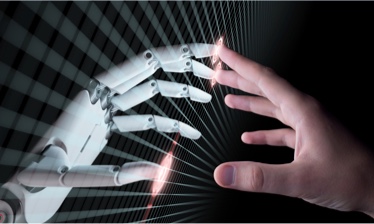
-
What is machine learning? From self-driving cars to assistants that instantly translate from one language to another.
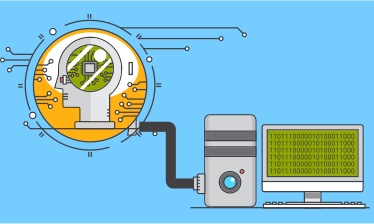
-
What is blockchain? Find out what it is, how it works and the

applications of blockchain.
The 'Global Smart Grids Innovation Hub'
PIn order to continue leading the the energy transition, Iberdrola has created a global centre for innovation in smart grids: the Global Smart Grids Innovation Hub. Its aim is to be a global benchmark in smart grids and to act as a driving force for innovation, combining its technological capacity with that of suppliers, collaborators and start-ups from around the world.
The initiative brings together the innovative potential of more than 200 professionals to undertake R&D&i projects related to the challenges posed by the electricity grids of the future. See more
The 'Global Smart Grids Innovation Hub'
PIn order to continue leading the the energy transition, Iberdrola has created a global centre for innovation in smart grids: the Global Smart Grids Innovation Hub. Its aim is to be a global benchmark in smart grids and to act as a driving force for innovation, combining its technological capacity with that of suppliers, collaborators and start-ups from around the world.
The initiative brings together the innovative potential of more than 200 professionals to undertake R&D&i projects related to the challenges posed by the electricity grids of the future. See more
What differentiates smart grids from a traditional electricity grid?
For centuries, the energy system has responded to an analogue and unidirectional model: energy was produced in power generation plants and distributed to consumers in their homes, businesses, factories and for public use in the cities. But the technology and energy transition towards a decarbonised economy are offering many other possibilities, which are only achievable if we can make the infrastructure in the circulatory system of our electricity system, the grids, more robust and, above all, more flexible and smart.
The traditional electricity grid is static and unidirectional, while the dynamic in smart grids is bidirectional, with communications between supplies and control centres, thus increasing efficiency and energy savings. Traditional grids barely interact with consumers, however, interaction is an intrinsic feature of smart grids. The electricity meters in conventional networks are electromechanical, while smart grids use digital meters. Maintenance methods are different. While traditional networks need manual inspections, smart grids can be monitored remotely.
Main advantages of smart grids
INCREASED NETWORK EFFICIENCY AND QUALITY OF SUPPLY
QUALITY OF SUPPLY
Remote management is a faster and more convenient way to manage every aspect of the supply point and services, such as detecting faults before they occur and reducing the number and duration of incidents. Likewise, an automated and digitalised grid can detect fraud and reduce losses, as well as improving security for employees and suppliers working on the grid.
CUSTOMERS ARE MORE INVOLVED
Digital grids provide consumers with real-time information about their consumption, maximum demand for power and a breakdown of their electricity use, giving them the information on which to base their decisions and the option to choose a rate to best suit their circumstances.
KEY TO THE ENERGY TRANSITION
Smart grids are streamlining the shift to decarbonisation and the electrification of the economy, facilitating, among other things sustainable mobility (electric cars), smart cities and decentralised consumption (self-consumption).
INCREASED NETWORK EFFICIENCY AND QUALITY OF SUPPLY
QUALITY OF SUPPLY
Remote management is a faster and more convenient way to manage every aspect of the supply point and services, such as detecting faults before they occur and reducing the number and duration of incidents. Likewise, an automated and digitalised grid can detect fraud and reduce losses, as well as improving security for employees and suppliers working on the grid.
CUSTOMERS ARE MORE INVOLVED
Digital grids provide consumers with real-time information about their consumption, maximum demand for power and a breakdown of their electricity use, giving them the information on which to base their decisions and the option to choose a rate to best suit their circumstances.
KEY TO THE ENERGY TRANSITION
Smart grids are streamlining the shift to decarbonisation and the electrification of the economy, facilitating, among other things sustainable mobility (electric cars), smart cities and decentralised consumption (self-consumption).

Smart grids, sustainable and environment-friendly
Without renewables, there will be no green transition and no Green Recovery, and without grids to make management and integration possible, there can be no renewables. Nor will sustainable mobility, with vehicles powered by green electricity, be possible. The invisible threads of our smart grids underpin the efficient functioning of a reliable, sustainable energy system and are essential for the shift to a new green paradigm.
Smart grids help to reduce greenhouse gas emissions, fighting global warming. Having an electrical system that optimises consumption and energy production encourages energy efficiency. In addition, consumers can see their consumption in real time, which allows them to save energy and reduce their bills, while reducing their environmental impact as there are no more energy losses. They are also the solution to energy waste, as they optimise energy sources to the maximum by applyingenergy efficiency measures in homes, businesses and industries on a daily basis.
Smart grids can operate with energy from renewable sources. When you know how much power you are using and what you are using it for, you can predict how much you need to produce in the long term, opting specifically for renewable energies and rejecting non-renewables that are mainly used when supplies are short.





.jpg/ada45510-6bed-25eb-9920-5e95406bed1d?t=1641984653481)